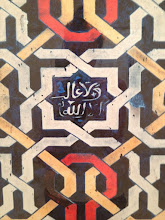I wanted to try something to a slightly different beat (pun intended) for this entry. I am devoting this week to music and the reuse of songs or titles throughout a range of styles and periods. Now, I am the first to say that I am no musicologist, so I am not going to attempt to analyze one musician's remake of a given tune and try to derive greater meaning from it. No no no, this is simply a fun drill for me to demonstrate how, like in the "fine arts" (for lack of a better word) themes and ideas are constantly reused and reborn but at the same time are heralded for their avant-garde nature.
Across the Universe: Probably one of the most covered songs and bands. Ever. Here is a little sampling of the original and two of the many covers.
Rufus Wainwright, Moby & Sean Lennon
La Marseillaise: The French national anthem chanté as it was meant to be, and then the controversial version by Monsieur Gainsbourg himself.
Baby Love: Women across generations and race lines complaining about men.
Take a walk on the wild side: The original song and the beginning repeated in Tribe'sCan I kick it? Yes, you can!
Dancing With Myself: A new age bands version of this icon's classic.
I can't get no satisfaction: A slowed down, almost melancholy take on the original hit.
Long Black Veil: Two different versions of this song--I am honestly not sure whose came first, if any, or if they both ripped it off of yet another rock giant of the time.
Lover I don't have to love: A female, yet equally emo, voice on this sad ballad.
What a wonderful world: Three very different but all worthy (though I tend to favor the latter) takes on this up-beat number.
You're gonna make me lonesome when you go: And last but not least, for our departure, Madeline Peyroux's jazzy remake of Bob Dylan's croaking.





